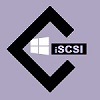
This article is based on a limited number of tests with a narrow focus on booting Windows operating systems from a Storage Area Network (SAN) using Windows iSCSI Software Targets. iSCSI Software Targets are available on other operating systems including Linux and FreeBSD, but have not been tested by the author and are not covered here.
This article is based on experiments prompted by the SANBOOT Windows on UEFI system? discussion on the reboot.pro forum. Thanks to Erwan Labalec for his many contributions to the forum discussion.
Setting up a PXE Boot server is beyond the scope of this article. TinyPXE Server was used for tests and a detailed TinyPXE Server guide is available here. The iPXE opensource network boot loader was used during tests to attach and boot the different iSCSI Targets and Devices tested.
Initial tests were carried out on physical hardware, however the results in this article are based on tests running in a virtual environment - VirtualBox version 6.0.8 r130520 (Qt5.6.2). The VirtualBox test results appear consistent with the tests previously carried out on physical hardware. For more information about the VirtualBox test setup - see here.
A 64-bit Windows 10.0.14393 Operating System (installed from en_windows_10_enterprise_2016_ltsb_x64_dvd_9059483.iso) was running on the virtual system hosting the iSCSI Target software. The same Windows .iso file was used as source when installing and booting Windows to ensure consistency across experiments with different iSCSI Targets. Different versions of Windows and hardware variations may effect results. The installation of other Windows Operating Systems has been tested using iSCSI Console Target software, with results available here.
A manual installation of Windows has been tested by partitioning the target disk > extracting the contents of install.wim > running bcdboot.exe to create boot files. Unfortunately all attempts to manually install Windows (with the Initiator system running UEFI Firmware) were unsuccessful and running Windows Setup (setup.exe) is therefore required. Installing using Windows Setup appears to create registry entries required during Stage 2 of the installation process. Limitations such as minimum target device size may apply when using setup.exe.
The UEFI boot tests documented in this article simulate booting a system with UEFI firmware with Compatibility Support Module (CSM) disabled. Results when attempting to SAN boot iSCSI Targets using a system with UEFI firmware were mixed with some Targets supporting this firmware type. UEFI Firmware is clearly not as widely supported as SAN booting systems with BIOS Firmware.
.
Document date - 14th June 2019